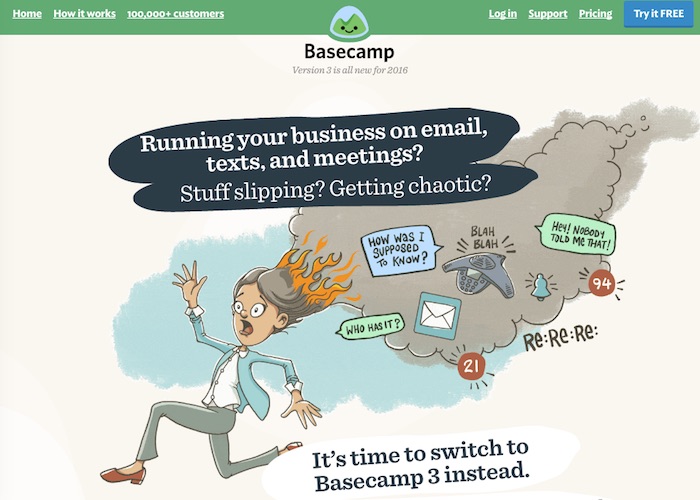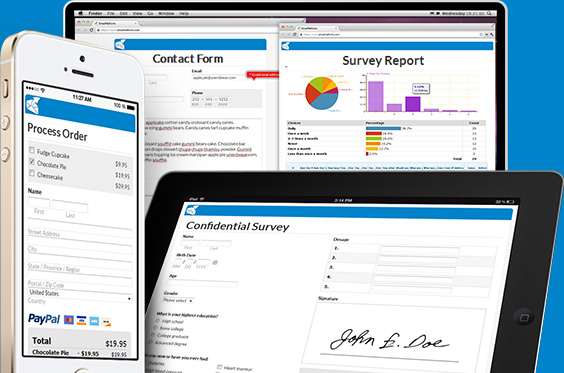
Tedious Tasks You Should Be Automating
Running a business takes a lot of hands on work. But many people forget that not all of that work needs to be done by actual human hands.
Streamlining certain processes through automation can not only save you time and money, but may even help you produce a better overall experience for your customers.
While there are some larger and more intricate tasks that will definitely need physical oversight, many of the more tedious ones can actually be automated.
Here are 7 menial tasks that you should be automating…
[content_upgrade cu_id=”307″]Download our guide: How to Get Started with Business Automation[content_upgrade_button]Click Here[/content_upgrade_button][/content_upgrade]
![Businessman and Computer at desk. [url=http://www.istockphoto.com/file_search.php?action=file&lightboxID=5793267][IMG]http://www.stevecole.com/_ISP_Business.JPG[/IMG][/url]](/wp-content/uploads/2016/12/dataentry.jpg) Automation for data entry, on the other hand, averages around 10 seconds per entry, saving hundreds of man-hours and reducing the amount of human-made errors. Canvas, for example, enables users to collect information using mobile devices, share that information and easily integrate with existing backend systems.
Automation for data entry, on the other hand, averages around 10 seconds per entry, saving hundreds of man-hours and reducing the amount of human-made errors. Canvas, for example, enables users to collect information using mobile devices, share that information and easily integrate with existing backend systems.
 Keep in mind that some software may have some initial cost in terms of setup (time, money, energy, etc.), but the overall value and savings can impact your company positively in the long run.
Keep in mind that some software may have some initial cost in terms of setup (time, money, energy, etc.), but the overall value and savings can impact your company positively in the long run.
 Automation software can connect form information with any number of tools to help simplify processes that would otherwise eat into your time and energy.
Automation software can connect form information with any number of tools to help simplify processes that would otherwise eat into your time and energy.
1. Data Entry
Data entry is one of the most repetitive (and tedious) tasks performed by most businesses, which means it’s also one of the biggest areas for human error. Repetition leads to disengagement, which can lead to costly mistakes. You also have to dedicate personnel to perform data entry tasks who could probably be more efficiently used elsewhere. The average worker entering data spends approximately three minutes per entry, and this doesn’t account for time lost for breaks, interruptions, or fixing errors.![Businessman and Computer at desk. [url=http://www.istockphoto.com/file_search.php?action=file&lightboxID=5793267][IMG]http://www.stevecole.com/_ISP_Business.JPG[/IMG][/url]](/wp-content/uploads/2016/12/dataentry.jpg) Automation for data entry, on the other hand, averages around 10 seconds per entry, saving hundreds of man-hours and reducing the amount of human-made errors. Canvas, for example, enables users to collect information using mobile devices, share that information and easily integrate with existing backend systems.
Automation for data entry, on the other hand, averages around 10 seconds per entry, saving hundreds of man-hours and reducing the amount of human-made errors. Canvas, for example, enables users to collect information using mobile devices, share that information and easily integrate with existing backend systems.
2. Reporting
Manual reporting may never fully go out of style depending on the type and depth of each report, but you would probably be surprised how many organizations still use manual reporting for things that can easily be automated. One of the downsides to gathering information for reports on your own (aside from the time concerns) is that it becomes increasingly difficult to measure results in real time. By the time the information is collected, analyzed, typed up, and turned into something readable, the numbers and figures may no longer be 100% accurate. Better results can be achieved through automation, since many programs can deploy real-time results and can draw data from sources that may be otherwise overlooked. You can also automate several different types of reports depending on your needs. Some automation software will allow you to automate:- Budget Reports
- Client Reports
- Custom Reports
- Email Reports
- Executive Reports
- Expense Reports
- Report Exporting
- Resource Reports
- Task Reports
- Time Reports
- User Reports
3. Project Management
Like reports, project management is an area that may still need some human interaction, but with today’s project management software, the menial tasks can be handled without much effort. Things like:- Calendars
- Critical Paths (the earliest and latest that each activity can start and finish to show the longest path to the end of the project)
- Cross-Project Dependencies (you can set dependencies that span across multiple projects)
- Issue Management (track issues, submit bugs, and view fixes in real time)
- Portfolio Management
- Project Hierarchy
- Project Templates
 Keep in mind that some software may have some initial cost in terms of setup (time, money, energy, etc.), but the overall value and savings can impact your company positively in the long run.
Keep in mind that some software may have some initial cost in terms of setup (time, money, energy, etc.), but the overall value and savings can impact your company positively in the long run.
4. Scheduling
Even if you don’t want to invest in a robust project management software system, automating your scheduling will help reduce time spent setting deadlines, viewing project timelines, and assigning tasks. Scheduling automation can help with things like:- Creating calendars for content or tasks
- Assigning workers to tasks
- Setting up email responses and notifications
- Creating workflows
- Creating milestones
- Tracking time
5. File Management
Not every project manager or CEO considers how files will be handled, but chances are that someone in your company probably has to deal with file types, transfers, and uploads. File management is an important area for many businesses, and can also be prone to human error with things like missing files, bad or incomplete uploads, or even corrupted data. If you deal with multiple files on a daily basis, the storage and hierarchy of your filing system can also become a hindrance if not properly managed. How will you know where to look for the file you need when you need it? How will customers or clients submit files to you? What file types should they use? What happens if you need to leave a comment on a certain file type? Automation can handle all of these issues. File management automation software can help you:- Attach files to tasks
- Add file comments without altering files
- Organize files in a central location
- Perform multiple file uploads
- Add storage space when you need it
- Store files in a third-party system.
- Edit multiple files simultaneously
- Track and save file changes
6. Online Forms
While most forms are already somewhat automated in how they gather information, you can actually take the automation process a step further to ease your workflow. Using automation software like Zapier, for example, you can integrate your forms with a variety of other tasks, like sending form data to Google Sheets or Excel, sending notifications when a form has been filled out, automatically creating a task based on a form submission, and more. Automation software can connect form information with any number of tools to help simplify processes that would otherwise eat into your time and energy.
Automation software can connect form information with any number of tools to help simplify processes that would otherwise eat into your time and energy.
7. Support
While automation won’t help you manage all of your customer interactions, it can also help ease some of the burden and create a more seamless user experience, which in turn can do wonders for your reputation. Automation can cover minor support tasks like:- Providing customer support services (ticketing, etc.)
- Offering live chat features
- Social media management
- Email autoresponders and FAQs

